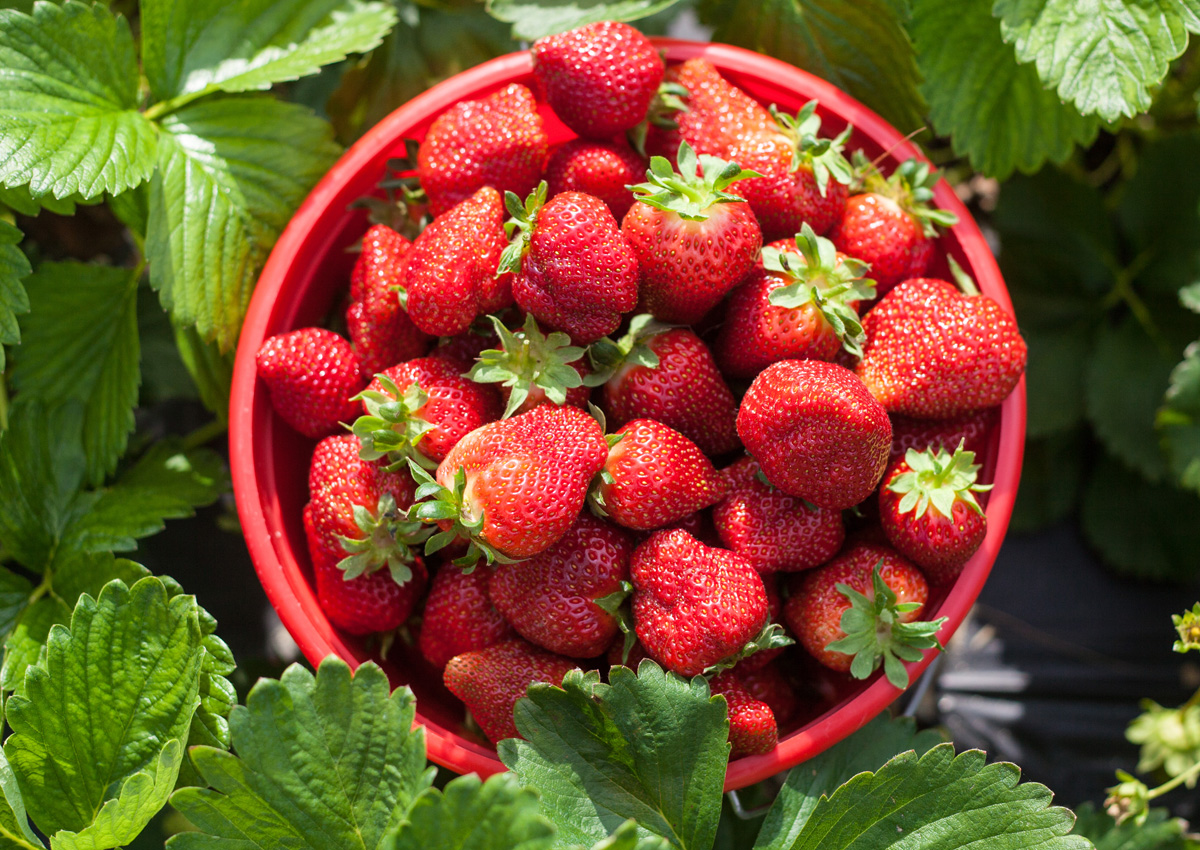
Mechanism for Fruit and Seed Development in Flowering Plants Now Identified
August 3, 2022| |
Rising global temperatures affect pollinator populations and food production is becoming increasingly difficult for farmers. A new study at the University of Maryland addresses this issue, giving insights into how flowering plants develop fruits and seeds.
In the study led by Zhongchi Liu, the team aimed to discover how fertilization — or pollination — triggers the fruit development process. The team suspected that an internal communication system signals the plant to develop fruit, but the researchers were unsure how that system was being activated by fertilization or pollination. To find out, the team simulated pollination and fruit development mechanisms using strawberry plants as they are particularly suited to fertilization modeling due to their unique structure and seed location.
Liu's team identified AGL62, a gene universally found in all flowering plants, as the trigger to a plant's fruit and seed production. AGL62 stimulates the production of the plant growth hormone auxin. Once A6L62 activates, auxin is synthesized to prompt the creation of seed coat, the seed's outer protective layer; the endosperm, the part of a seed that provides food for a developing plant embryo; and fruit. The researchers said that auxin's role in regulating endosperm growth is especially significant as it impacts the size of the grain and enlargement of the fruit.
For more details, read the article in the National Science Foundation website.
| |
You might also like:
- International Research Team Identifies Pathway for Accelerated Plant Flowering in Low-Nitrogen Soils
- Study Finds that Sugar Influences Onset of Flowering
- Scientists in Singapore Discover Flowering "Switch" in Plants
Biotech Updates is a weekly newsletter of ISAAA, a not-for-profit organization. It is distributed for free to over 22,000 subscribers worldwide to inform them about the key developments in biosciences, especially in biotechnology. Your support will help us in our mission to feed the world with knowledge. You can help by donating as little as $10.
-
See more articles:
-
News from Around the World
- AI Tool Predicts Shape of ~200 Million Proteins
- Socio-economic Impact Assessment Complements Risk Assessment of Gene Drive Organisms, According to Experts
- Ghana Approves Bt Cowpea for Environmental and Market Release
- Texas A&M AgriLife Uses Corn Breeding and Entomology to Address Crop's Major Challenges
- Mechanism for Fruit and Seed Development in Flowering Plants Now Identified
- Researchers Identify Three Genes Involved in Melon Ripening
- Long-term Study Shows Agri-environment Schemes Boost Wildlife Populations
-
Research Highlights
- Plants Reveal Metabolism and Circadian Functions With the Help of Drugs
- Gene Recombination Region Sizes Affect Crop Performance of Rye
-
Plant
- Workshop to Explore Policy Considerations for Gene Editing in Asia and Australia
- Chinese Team Finds New Ways to Enhance Wheat Yield
-
Health
- CRISPR Helped to Successfully Prevent and Treat COVID-19 Infections
-
Read the latest: - Biotech Updates (December 17, 2025)
- Gene Editing Supplement (December 17, 2025)
- Gene Drive Supplement (February 22, 2023)
-
Subscribe to BU: - Share
- Tweet

